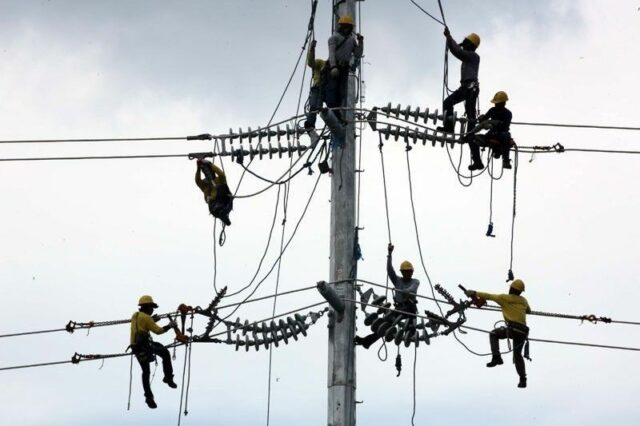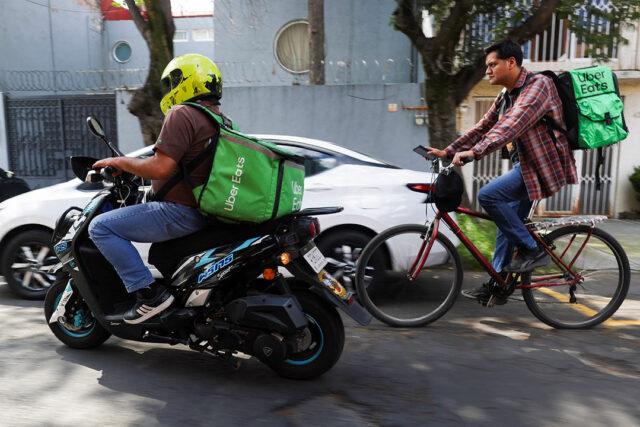Unpacking the Filipino Dream: Optimism meets reality
The Boston Consulting Group (BCG)’s latest research, “The Filipino Dream,” paints an inspiring picture of what gets Filipinos going: the aspirational dream of financial security in health emergencies and entrepreneurial passion. These dreams manifest the long-enduring strength and creativity of Filipinos, especially when it involves systemic and economic challenges that require the people to creatively overcome them. As we review this study, we can praise BCG for a brilliant analysis yet critically examine some conclusions that might differ from on ground realities in the Philippines.
Indeed, as we celebrate the findings of this study, it is very important to temper this optimism with a critical look at realities that may not exactly agree with the report’s conclusions.
CELEBRATING FILIPINO RESILIENCE
The report’s findings that 58% of Filipinos prioritize financial security for healthcare emergencies and 56% aspire to start their own businesses resonate deeply within the national psyche. Filipinos have long been known for their ingenuity and resourcefulness, often rising above challenges with a smile and an entrepreneurial spirit. The segmentation of dreamers into Providers, Trailblazers, Guardians, and Rebuilders offers a nuanced understanding of the diverse motivations across demographics.
BCG’s methodology, combining clustering and sentiment analysis, deserves praise for its rigor. It captures insights from over 1,400 respondents and gives a voice to the rural sector, which speaks of shared optimism and unique struggles that define the Filipino experience. The finding that 68% of Filipinos are optimistic about the coming year, despite significant challenges, underscores a remarkable spirit of hope.
It is quite striking that 58% of Filipinos dream about financial security in case health emergencies arise. It reflects growing consciousness of the risks brought about by unexpected medical costs, thereby being a critical step to advocating for better healthcare access. Programs like Universal Health Care (UHC) and initiatives such as expanded coverage under PhilHealth have shown good promise to ease burden. However, for many Filipinos, these benefits are unattainable. Long waiting times, insufficient hospital capacity, and the high cost of specialty care often leave patients relying on personal savings or informal systems, such as paluwagan (an informal group savings/lending system).
Moreover, rural areas, where access to healthcare facilities is limited, face even steeper challenges. This reality stands in contrast to the optimism reflected in the study. While progress has been made, the persistent gap in healthcare access raises the question: Are Filipinos truly empowered to tackle health emergencies, or are they simply becoming more adept at navigating an inadequate system?
It may also be argued that while financial security ranks as a top aspiration, the study’s optimism about institutional collaboration appears somewhat detached from realities on the ground.
For example, the reliance on informal savings mechanisms such as paluwagan is a reflection of distrust in formal financial systems. This is not a minor systemic hurdle but a systemic issue, compounded by inconsistent service delivery, lack of accessible financial products, and gaps in financial literacy.
However, starting a business is a worthwhile dream, and the question is whether the ecosystem for entrepreneurship is capable enough to foster such dreams. The reality is that credit access is limited, taxes have high compliance costs, and government support is usually lacking. These realities will temper the optimism about micro-entrepreneurship, and there is a growing need to focus on some of the structural challenges in more depth.
THE ENTREPRENEURIAL SPIRIT: A DOUBLE-EDGED SWORD
The dream of entrepreneurship, shared by 56% of respondents, reflects the Filipino people’s inherent creativity and drive for independence. This finding aligns with the visible rise of small businesses across the country, particularly during the pandemic, when Filipinos turned to micro-enterprises as a lifeline. From online sellers to food stalls, entrepreneurship has undeniably fueled economic activity.
Yet, this optimism calls for a reality check. Starting a business in the Philippines is not without significant barriers. The country’s ranking in the Ease of Doing Business Index, though improved in recent years, still points to challenges such as bureaucratic red tape, high startup costs, and limited access to financing.
Moreover, most entrepreneurs are informal entrepreneurs. They lack legal protection or financial security. Digital platforms such as GCash and Shopee have enabled small businesses, but many Filipinos do not possess the digital tools or the literacy to succeed in that ecosystem. In celebrating entrepreneurship, we must also talk about the systemic barriers which make it difficult for so many Filipinos to scale up their ventures sustainably.
RURAL OPTIMISM: A MISALIGNMENT?
BCG’s study notes that rural respondents express higher levels of optimism about the future compared to their urban counterparts. This finding is heartening, as it reflects the resilience of rural communities despite limited resources. However, it also raises questions about whether this optimism is rooted in tangible progress or simply in the enduring Filipino ability to find hope in adversity.
In fact, rural Filipinos face tremendous challenges, including limited access to healthcare, education, and economic opportunities. Infrastructure gaps, such as poor internet connectivity, further isolate these communities from the benefits of digital transformation. While optimism is a powerful force, policymakers and businesses must make sure that it translates into concrete improvements in quality of life. Otherwise, this positivity risks being overshadowed by systemic inequities.
INSTITUTIONAL TRUST: A LONG-STANDING CHALLENGE
The study points out a critical gap between Filipinos’ trusting nature in themselves versus that with institutions, wherein more persons turn to self-reliance because of failure attributed to institutions. It’s probably the most realistic result of the report. Institutional mistrust has deep roots because of previous issues such as graft, inefficiency, and varying policy implementation in the country.
This skepticism manifests itself in various ways: from continuing to rely on informal financial systems to being hesitant to approach formal healthcare providers. This is identified as a barrier by the study, yet it also points to an opportunity for institutions to rebuild trust through transparency and accountability. Programs that deliver tangible, reliable benefits — be it in healthcare, education, or financial services — are crucial to bridging the trust gap.
OPTIMISM AND REALISM
Most impressive, perhaps, is that this study shows the Filipino spirit in its most resilient form. The fact that 68% of respondents are optimistic about the coming year really says a lot about how much people want to go beyond their problems. While this optimism should be savored, it should not be taken without an acknowledgment of the problems that do not go away.
To make health security an actuality, we need systemic reforms to enable UHC. To sustain entrepreneurship, we need a facilitative environment that nourishes small businesses at various stages from seed to growth. For the optimism expressed in rural settings to see the light of day into progress, infrastructure, and educational investments are very important.
DREAMS TURNED INTO REALITY
The Filipino Dream offers an important look into the hopes and dreams of Filipinos. However, dreams alone do not create change; this requires collective action to confront barriers and create opportunities involving individuals, institutions, and policymakers.
Filipinos have always been resilient and resourceful. It is time for the systems meant to serve them to reflect the same strength and reliability. Only then can we ensure that the optimism and dreams highlighted in this study become the foundation for a more equitable and prosperous Philippines.
POLICY DEVELOPMENT: FILLING THE GAPS
Targeted policy interventions are needed to bridge the gap between aspiration and reality. The first priority should be reforms to make healthcare more accessible and affordable, as indicated by the top concern identified in the study: investing in preventive care, streamlining public health services, and encouraging private sector innovation in health insurance.
The financial sector needs to re-evaluate regulatory frameworks toward trust and accessibility. In fact, simplification of microfinance and small business loans procedures can encourage savings and borrowing. Furthermore, a national campaign to enhance financial literacy will empower more Filipinos to make informed decisions.
The study’s segmentation of dreamers can be very useful for policymakers. One-size-fits-all programs may not work as well as programs that are targeted to the needs of Providers, Trailblazers, Guardians, and Rebuilders. For example, retirement planning programs might be best suited for rural Guardians, while urban Trailblazers might need skill-building programs to support their entrepreneurial ventures.
RETHINKING BUSINESS STRATEGIES
More important is for businesses themselves to step up. Aligning with this call, in fact, is BCG’s impetus on the empowerment of Filipinos towards more inclusive business practices. Financial houses could consider producing products in response to savings for health and emergency funds, a package that satisfies short-term requirements and guarantees long-term security.
Corporations can play a vital role in helping aspiring entrepreneurs by providing mentorship, market access, and startup capital. Public-private partnerships could be used to help micro-entrepreneurs, especially in underserved regions. For example, e-commerce platforms could partner with local governments to train small business owners in digital marketing, thereby scaling up their operations.
THE NEED FOR FOLLOW-THROUGH RESEARCH
While “The Filipino Dream” provides informative material, it should not be taken as an overarching narrative but rather a jump off point for further scrutiny. Follow-up studies would take a closer look at areas such as understanding more distinctly the barriers women face, or the rural-urban divide in financial preparedness.
Moreover, a longitudinal study that follows the progress of Filipino dreamers over time would provide policymakers and businesses with actionable data. Are Trailblazers achieving financial independence? Have Rebuilders regained stability post-pandemic? These questions demand answers that can only come from sustained research efforts.
A CALL FOR COLLECTIVE ACTION
BCG’s Managing Director, Julian Cua, rightly emphasizes that the Filipino Dream is a collective vision. Realizing this vision will require collaboration across sectors. Policymakers, private corporations, and civil society must align their efforts to create an environment where dreams can flourish.
As we appreciate BCG for shining a light on the aspirations of Filipinos, we should also challenge ourselves to solve the barriers that hold many of us back. We can make these dreams become realities if we invest in policies, frameworks, and initiatives that empower every Filipino.
The resilience and optimism of Filipinos deserve not just recognition but tangible support. Let this study be the starting point for a movement, so financial security, entrepreneurial success, and progress may be in reach for everyone. In fulfilling the Filipino Dream, we uplift not just the individual but the nation itself.
You may download the BCG report here: https://tinyurl.com/26ydvkmf.
Dr. Ron F. Jabal, APR, is the CEO of the PAGEONE Group (www.pageonegroup.ph) and the founder of Advocacy Partners Asia (www.advocacy.ph).














